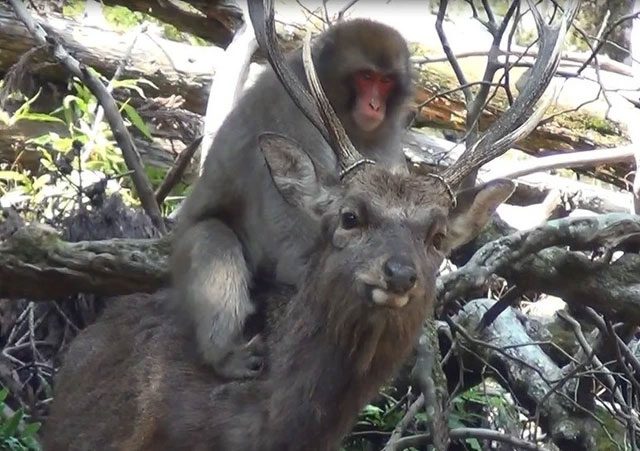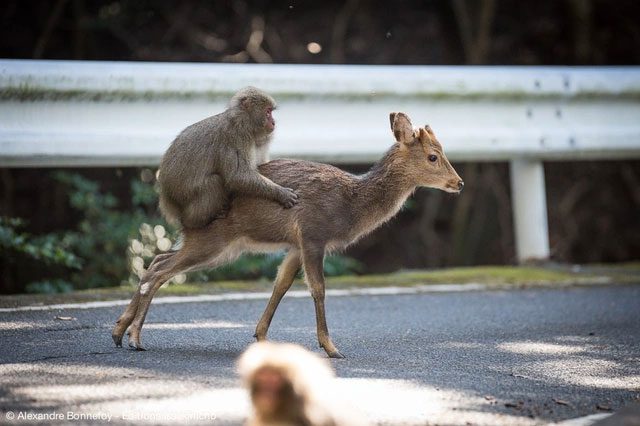Japanese Macaque (Macaca fuscata yakui), also known as the giant monkey, has recently been observed by biologists riding on the heads and backs of sika deer (Cervus nippon yakushimae).
These two species have coexisted peacefully in the forests of Japan for a very long time. Their relationship is incredibly close and mutually beneficial: deer eat seeds and fruits dropped by monkeys in exchange for monkeys grooming them and removing parasites from the deer, primarily to collect salt from the deer’s body. Occasionally, the deer also allow these monkeys to ride on their backs while they move along the path.
However, scientists have discovered that the friendship between these two species involves more than just observations and eye contact.

Occasionally, the deer also allow these monkeys to ride on their backs.
Researchers have noted that the dynamics of this mutually beneficial relationship between monkeys and deer have begun to take on a somewhat peculiar approach, with monkeys starting to view deer as their kind.
One of the first instances of this behavior observed by scientists occurred on Yakushima Island, Japan, in 2015, when a low-ranking male monkey attempted to ride at least two different female deer. While one of the deer did not seem to mind the monkey’s actions on its back, the other noticed and ran away.

Interestingly, only young female monkeys were found riding sika deer.
Between 2012 and 2015, another group of researchers delved into the peculiar behaviors of Japanese macaques. Overall, they recorded a total of 258 instances of monkeys riding deer in Minoo, north of Osaka, Japan. However, it is interesting to note that only young female monkeys were found riding sika deer.
Lead author Noëlle Gunst told Inverse that there are various hypotheses regarding the key factors behind the relationship between monkeys and deer. One hypothesis suggests that Japanese macaques may experience a special kind of stimulation while riding and grooming the deer, gradually leading them to perceive deer as their kind over time.
However, the authors note that these interpretations are merely speculations without scientific basis, and this behavior could represent a new habit among Japanese macaques.





















































